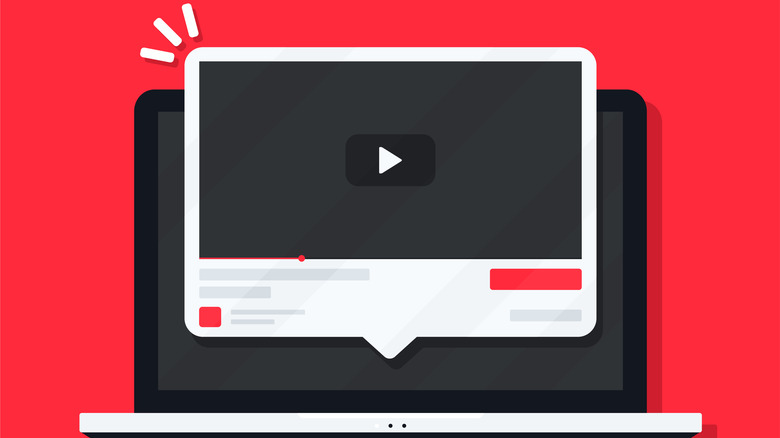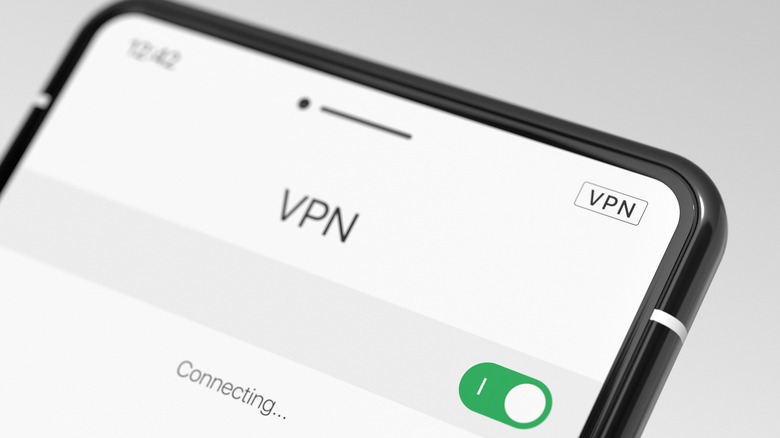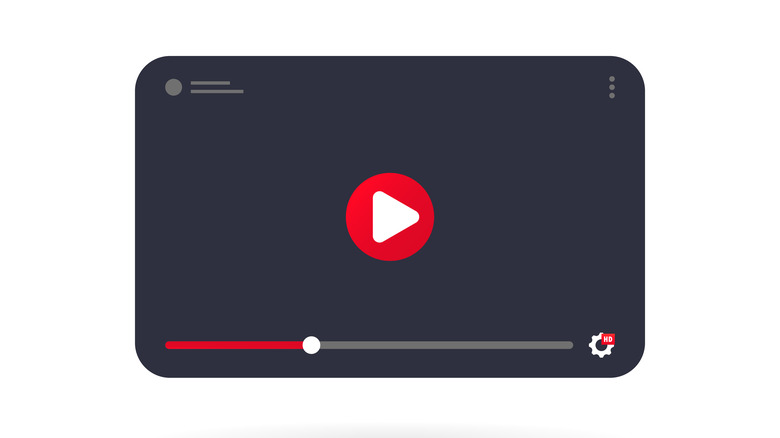How To Watch YouTube Videos That Say 'Not Available In Your Country'
If you use YouTube frequently, you've likely received the very annoying notification that a video you want to watch is unavailable in your country/region. There are a few reasons why this might happen. First, it's important to note that YouTube videos aren't all user-generated — the platform also hosts licensed content that can only be legally made available to specific countries. Content covered by licensing rights could include movies, TV shows, music videos, and even trailers.
Also, YouTube may geo-block specific content to comply with local laws (via Google). For example, residents of countries like China, North Korea, or Sudan are not allowed access to the platform because of stringent government regulations.
Depending on the kind of video and the circumstances surrounding its unavailability in your region, you might be completely unable to watch a video in your country, or you might have to pay to access a free video in other regions. Whatever the situation, the good news is you can bypass YouTube's geo-filter and watch videos that are not available in your country.
Use a VPN
Apart from providing privacy and security for your smartphone or computer, VPNs are also helpful for bypassing content restrictions. Most people are familiar with using VPNs to watch Netflix from other countries and access content that's not available to their region, and the same use case applies to blocked YouTube videos as well.
VPNs work by masking your IP address and then rerouting your internet traffic through a private server with a different IP address, effectively allowing you to browse the web as if you were in a foreign country. VPN services typically provide a range of server locations so that you can choose from a selection of other countries, and your actual IP address will be replaced with one from that location. For instance, if you're in China and connect to a server in the UK, the VPN service would replace your actual IP address with a UK IP address, giving YouTube servers the impression that you are in the UK.
It's typically easy to set up and use a VPN on your smartphone or computer. That's the hallmark of the best VPNs — all that's required is to download the app, sign up for a VPN service, and connect to a server in a location that has access to the blocked content.
Use a proxy
A proxy server is the best alternative if you'd rather not use a VPN. It's similar to a VPN in function — it will also mask your IP address by routing your web traffic through the proxy server instead of connecting directly to the website you're visiting. In other words, the proxy server communicates with the internet on the user's behalf.
This arrangement offers some level of security but not as much as a VPN. Proxies do not include built-in encryption protocols, which ensure that all your data and session activity are shielded from interception or monitoring.
Another significant difference between a VPN and a proxy is that proxies typically only work per app. For example, on a mobile device, you can use a proxy to watch blocked videos on the YouTube app, but those settings won't be applied to your browser unless you add them (and not all apps support proxies). On the other hand, a VPN will forward all traffic system-wide.
Overall, we recommend VPNs as a safer method of bypassing YouTube content restrictions. Still, a proxy server can also unblock geo-blocked videos if you're not from a country with repressive regulations. To help you get started, here's how to set up a proxy server on Windows and MacOS.
Download the video
You'll only get the best service for both VPN and proxy services if you opt for a paid plan. If you don't want to shell out the bucks, one way to watch blocked YouTube videos for free is to download the video. We have a guide dedicated to downloading YouTube videos on a desktop PC, and the process is similar for iOS, Android, tablets, or other devices.
Before you go down this route, you should keep in mind that it is against YouTube's Terms of Service to download their videos to your device, especially if you're using a third-party video converter. Legally, it's a gray area — Google probably isn't going to sue an individual, but it is copyright infringement. YouTube disapproves of downloading content from the platform onto your device because that hurts the platform's revenue.
YouTube is supported by ad revenue generated when users view the advertisements on monetized videos, and content creators are compensated with a portion of this income. So downloading instead of streaming deprives the platform, and ultimately the content creator, of their pay.



